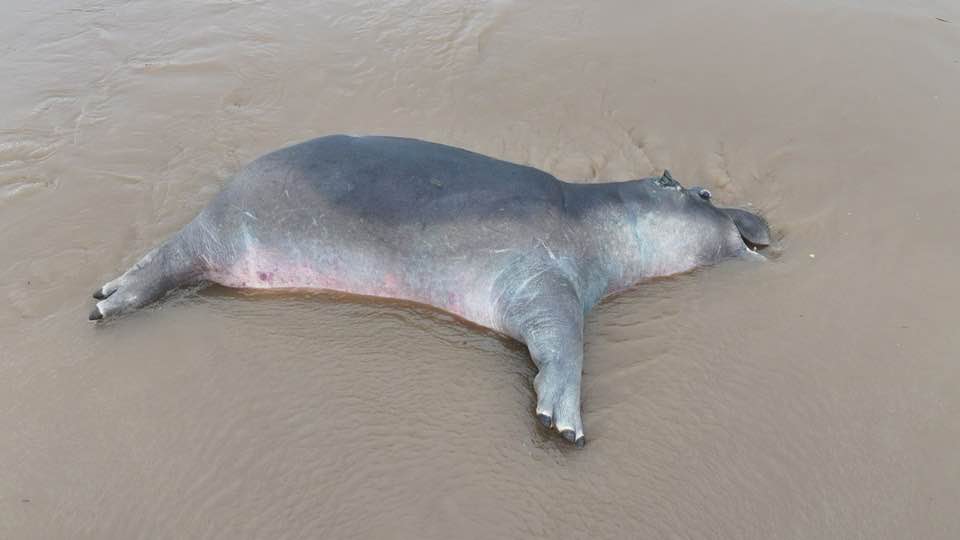An anthrax outbreak has claimed the lives of at least 50 hippos and other large mammals in Virunga National Park, eastern Democratic Republic of Congo. As local communities face increasing hardship and insecurity, health experts warn of a serious risk of human infection from this deadly soil-borne bacterium.
A new ecological disaster is unfolding in Virunga National Park, one of Africa’s most biodiverse conservation areas. Over the past few days, dozens of hippopotamus carcasses have been spotted floating along the Ishasha River, which forms the natural border between the DRC and Uganda. Tests have confirmed that the animals died from anthrax — a severe infectious disease caused by Bacillus anthracis, a bacterium that can remain dormant in soil for decades in the form of spores.
According to park director Emmanuel De Merode, at least 50 hippos and some buffaloes have succumbed to the disease. The first dead animals were discovered near the village of Lulimbi, in a part of the park controlled by armed rebel groups, complicating response efforts. Park-released images show the large mammals lying on their sides or backs, entangled in riverbank vegetation.
This outbreak represents a major setback for conservation efforts. The park’s hippo population had slowly recovered to around 1,200 after plunging from more than 20,000 in the early 2000s due to armed conflict and rampant poaching. The current deaths could undo years of progress.
Beyond the environmental impact, the outbreak poses a direct threat to human health. “This is a dangerous situation because the region is at war, and people are desperate for food,” says Ladislas Witanene of the Congo Basin Conservation Society. “If someone finds a dead hippo in the forest, they might see it as meat — but it could be deadly.”
Anthrax can be transmitted to humans through contact with infected animals, ingestion of contaminated meat or water, or even inhalation of spores. To address the threat, park authorities and the Congolese Institute for Nature Conservation (ICCN) have launched a public awareness campaign urging residents to avoid dead animals, refrain from eating bushmeat, and boil drinking water.
Excavators are being used to remove the carcasses from the river to prevent further contamination. The park has also stated that anthrax is treatable in humans if diagnosed early, typically with a course of antibiotics.
Experts say this crisis underscores the urgent need for improved wildlife zone mapping and the physical protection of high-risk areas. “Many of the zones where hippos and other species live aren’t even mapped near villages,” Witanene notes. “We need to consider fencing or containment in areas where animal diseases could threaten human populations.”
This outbreak comes just as over 1,000 elephants recently returned to Virunga from Uganda’s Queen Elizabeth National Park, where they had fled due to poaching and armed conflict. The anthrax crisis, however, reveals just how fragile these conservation gains remain in the Congo Basin’s volatile landscape — where biodiversity, public health, and human livelihoods are increasingly interconnected.
Fanta Mabo

